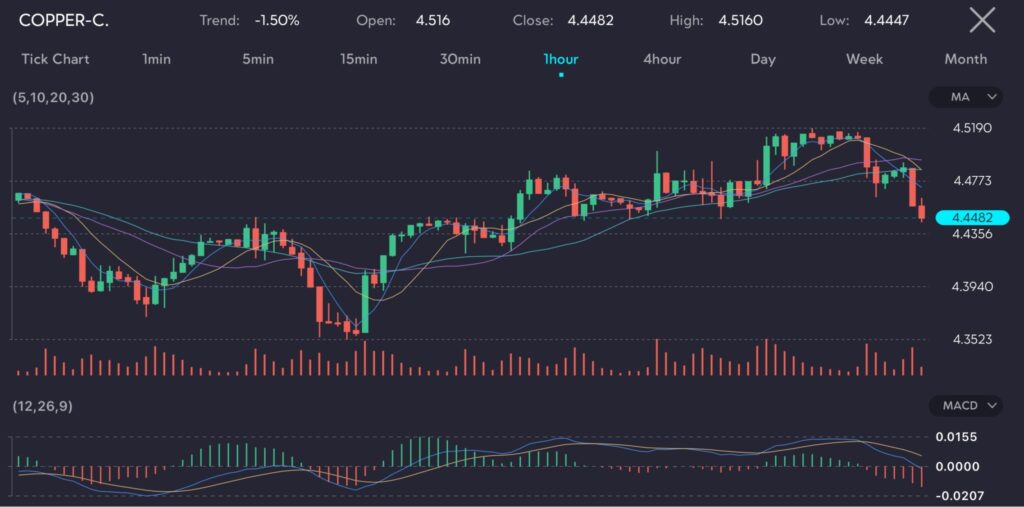Key points:
- Copper prices on the London Metal Exchange (LME) to $4.45 per pound.
- Copper is anticipated to break a four-week losing streak with a 0.8% weekly rise.
- The strength of the US dollar raises costs for non-US buyers, dampening demand.
Copper (Symbol: Copper-C) prices fell as the US dollar strengthened, although the London Metal Exchange (LME) contract is set for its first weekly gain in five weeks, buoyed by increased physical demand following recent price slumps.
Influence of the greenback on the market
Three-month copper prices dipped to $4.45 per pound. Despite so, copper prices have risen over the week, poised to end a streak of four consecutive weekly losses. The strengthening of the US dollar, reaching an eight-week high above 159 yen and near a five-week peak against sterling, has contributed to this decline.
A stronger US dollar makes dollar-denominated commodities more expensive for holders of other currencies, thereby reducing demand.
Physical demand and inventory
Earlier this week, copper prices fell to $4.33 per pound, the lowest in two months, due to persistently high stockpiles in China which raised concerns over weak demand. However, this drop in prices spurred physical purchases, providing support around the $4.33-$4.36 per pound range. Such buying activities have helped stabilise prices.

Picture: Copper prices trading in a stable range as observed on the VT Markets app.
Copper prices are highly sensitive to shifts in global economic conditions and currency fluctuations. For instance, during the 2008 financial crisis, copper prices plummeted due to a sharp decline in industrial activity. Conversely, during periods of economic recovery and growth, such as in the early 2010s, copper prices surged.
Outlook and opportunities for copper traders in June
Given the current dynamics, the stronger dollar is likely to keep pressure on copper prices in the near term. However, the increased physical demand could provide a floor, preventing significant declines.
Investors should monitor economic indicators and currency movements closely, as these will significantly influence the trajectory of copper.
Related content: What are commodities and how do you trade them
Looking forward, if the US dollar continues to strengthen and global economic growth remains uncertain, copper prices may face further downward pressure.
However, sustained physical demand and potential supply disruptions could offer some support.









